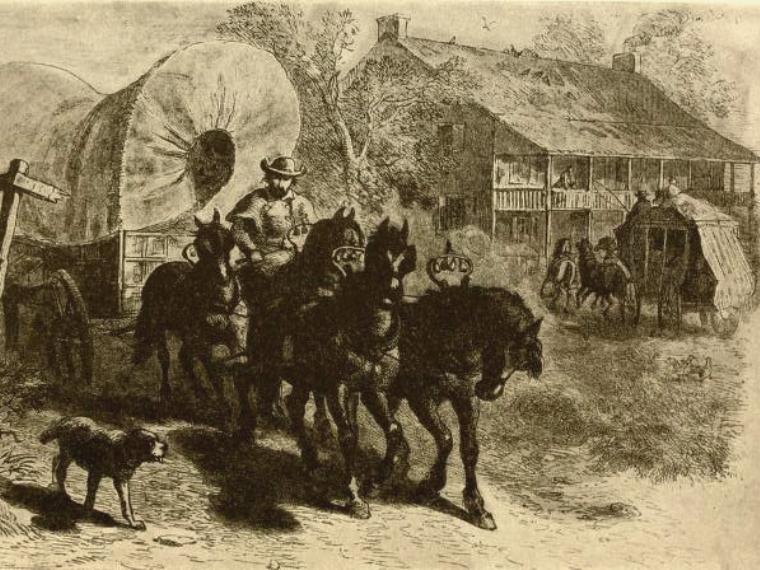Last month I had a horrible flight. The plane taxied out late. Next, the crew announced that they were done flying for the day. Back to the terminal. We ate stale eight-dollar sandwiches. Five hours later the new crew took off into heavy turbulence. The seats were cramped and hard. The 1185-mile trip cost $69.
Chicago's Highways, Old and New tells us that travelers 180 years ago experienced none of these modern inconveniences. However, travel back then had other challenges.
Chicago's busiest highway went from Detroit to Chicago. The 300 miles by stagecoach cost around $30. The journey, optimistically advertised as six days, could last several weeks.
Seating was three across on a hard narrow bench. Passengers painfully bumped knees with those opposite--often for 24 hours straight. Part of the journey might be in an open farm wagon.
The road was a winding Indian trail improved just enough for the stagecoach to strike tree stumps instead of trees. Heat, cold, choking dust and ravenous mosquitoes added to the bruising experience.
In the frequent muddy patches, passengers hopped out to assist the horses and walked or helped push. Often the coach would hit some obstacle, ejecting everybody into the mud or a swollen river. Drownings were not uncommon. If the impact broke a wheel, passengers walked several miles to the nearest house to spend the night.
Taverns, the hotels of the time, served meals of bread, butter and salt pork at a community table. Everybody discarded manners to spear the choicest bits. Flies were common, cleanliness not. Ah, bedtime. Beds were shared with one or two strangers, the floor with many. Bedbugs provided company to all.
Other highways to Chicago had their own wonders. Long lines of Hoosier wagons used State Street to bring farm products to Chicago. Southwest of downtown was the Nine Mile Swamp, described as the worst road in the West. Travelers on Green Bay Road occasionally perished from starvation or Indian attack. Some tavern keepers in Southern Illinois specialized in robbery and murder.
Chicago Highways Old and New tells these stories, and more, about the roads leading to Chicago. The early highway era lasted from the 1790s until the coming of the railroads in the 1850s. The map is a Chicago history classic itself.
Like Andreas, Quaife was a giant of Chicago historical literature. He wrote or edited hundreds of books and articles about Chicago, the Midwest and the West, including forty-three of the Lakeside Classics. In 1959, at age 79, he died prematurely in an automobile accident. He was still editing the Lakeside Classics and working on other books. SNAC has a short biography.
The book is available for reference at several Chicago Public Library locations and electronically at the Internet Archive.






Add a comment to: Milo Quaife’s Chicago Highways Old and New: Chicago History Classics